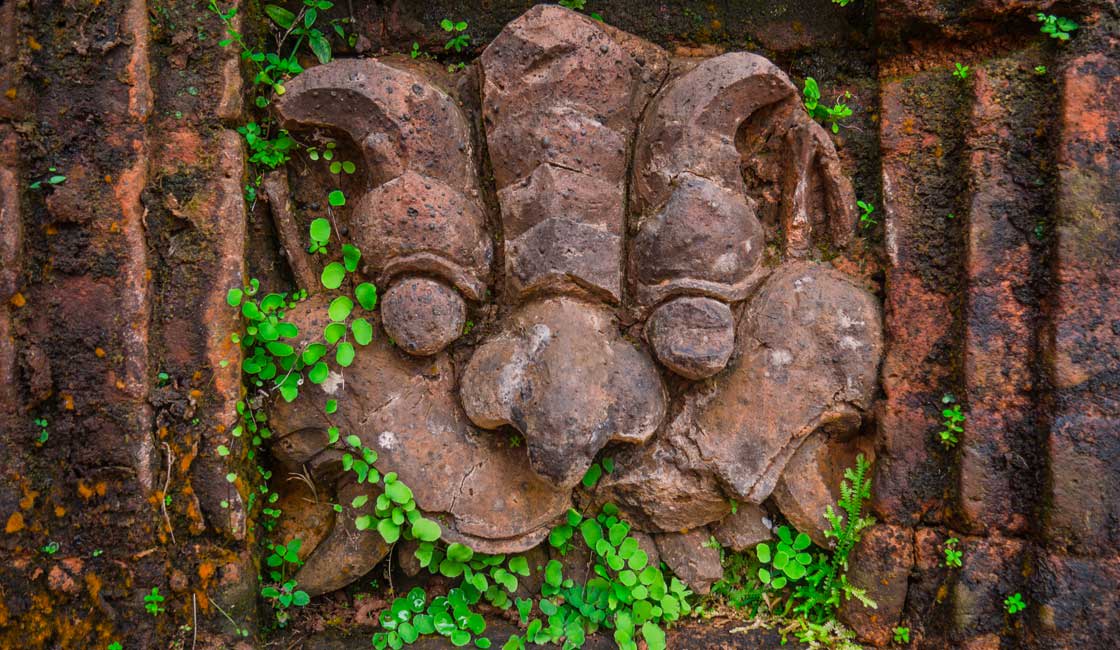
My Son in Vietnam is an ancient temple complex built between the 4th and 13th centuries, principally in dedication to the goddess Shiva, one of the foremost deities of Hinduism. Unequivocally one of the most interesting archaeological sites of Southeast Asia, the temples in My Son have one of the most enchanting stories, too.
In a setting worthy of any movie, in a picturesque valley overlooked by the imposing Cat’s Tooth Mountain (Hon Quap), the spectacular My Son ruins, Vietnam may not be on every traveler’s radar but are certainly worthy of inclusion on any itinerary of your Vietnamese vacations.
From the history of My Son’s origins to the tale of its abandonment, lost within the tangles of the enveloping lush jungle, and the subsequent rediscovery of the ancient ruins centuries later by French archeologists, the story of My Son in Vietnam is as fascinating as a kid’s tale or Indiana Jones movie.
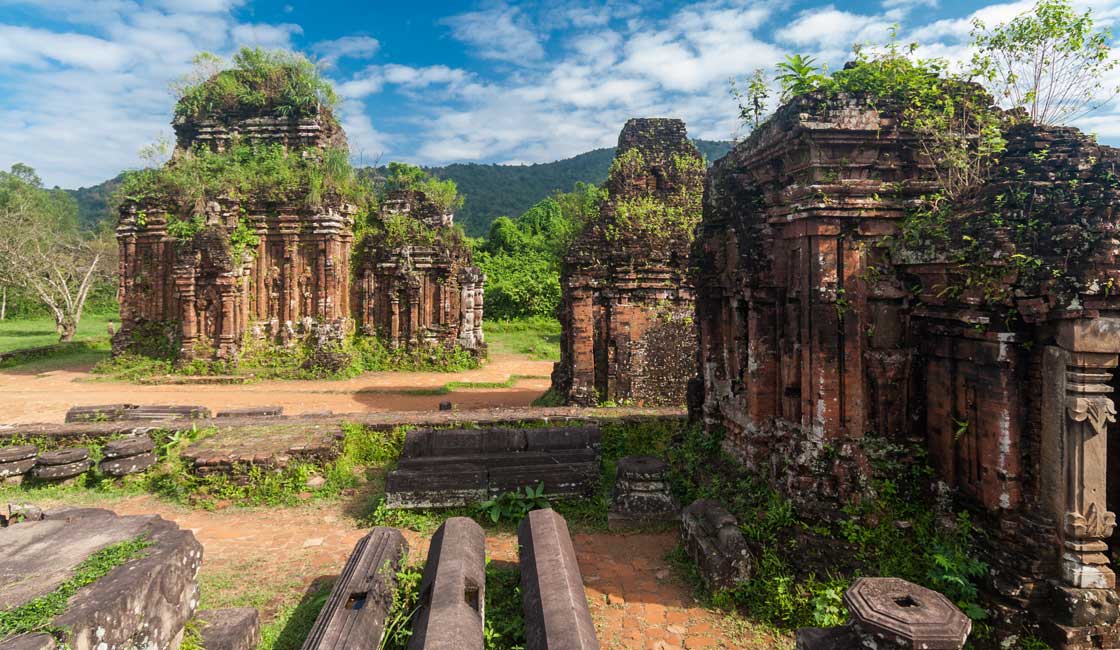
The site
The Champa Kingdom and its heritage are now largely forgotten, but for over 10 centuries it was the Cham people who owned and ruled the lands of contemporary central Vietnam.
Some theories say the Cham were descendants of Polynesian migrants who arrived on boats and chose these lands to settle down. They were, without doubt, great sailors and, at some points of history, even the pirates. Their presence was strong among all important traders in the world, as they controlled one of the main trade routes in the region.
What is left of their greatness is now only visible as collections of ruins and old temples in several parts of Vietnam. The most magnificent of them is the My Son Sanctuary – the one so beautifully pictured in Spike Lee’s movie “Da 5 Bloods”. The final shootout was filmed in the sacred valley of the Cham, near the ancient port of Hoi An.
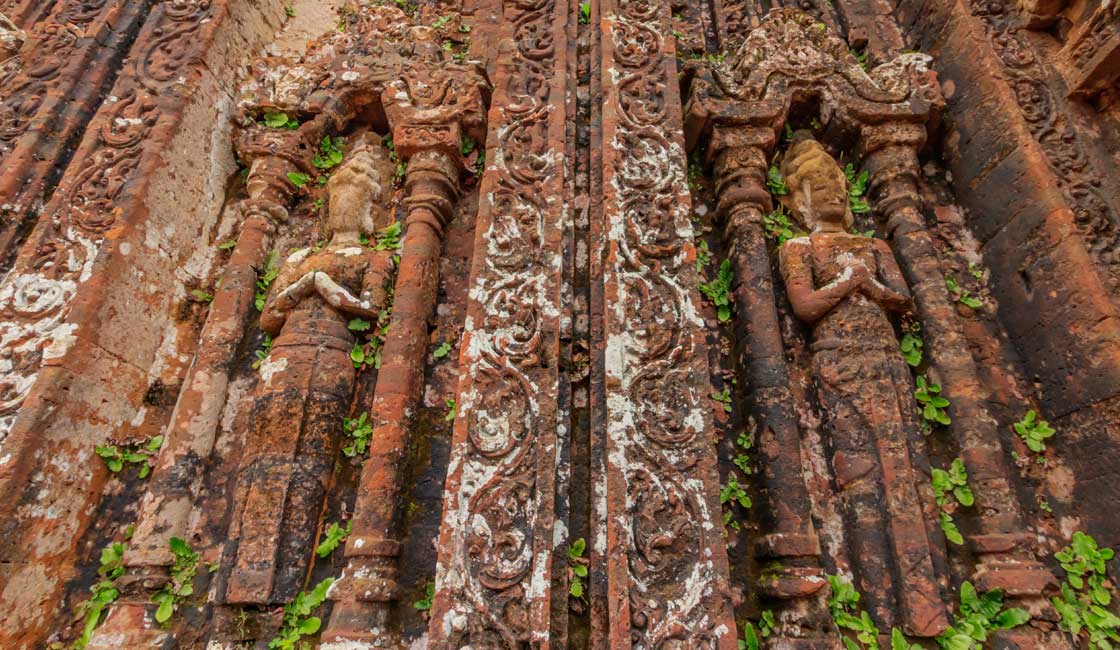
Deities in deep relief
Both My Son and Hoi An old town are UNESCO World Heritage Sites. They represent the history of the lands of contemporary Vietnam at a time when the Dai Viet people were still under Chinese occupation and were fighting for their independence.
The My Son sanctuary represents the abiding legacy of the once prominent Cham culture that now barely exists but was at one point as strong and large as the Angkor Empire, famed for building Angkor Wat and other temples in Cambodia.
In fact, the ancient Champa and Angkor Kingdoms were neighbors and rivals but shared their culture and beliefs. The Cham, just as the Khmer, were mostly Hindu. They adopted Hinduism directly from the Indians, whom they were extensively trading with.
The My Son Sanctuary was built over the course of 900 years and gives us exquisite insight into the history, religion, and politics of that time. It is also a wonderful display of the cultural sophistication of the kingdom and the mesmerizing artistic skills of its people.
When the Dai Viet people from the north freed themselves from the 1000 years of Chinese occupation, they started to march southwards, away from the enemy and towards the expansion of their own country. War after war, eventually the Cham had to abandon their sacred land and move south, finding new settlements. The youngest My Son temple is dated to the 13th century.
After that, the jungle took over, engulfing the temples until the French scholar, M. C. Paris, on his very own Indiana Jones-like adventure, found the ruins, not without the help of the local farmers in 1898. The French School of the Far East began the research on the site shortly after the discovery.
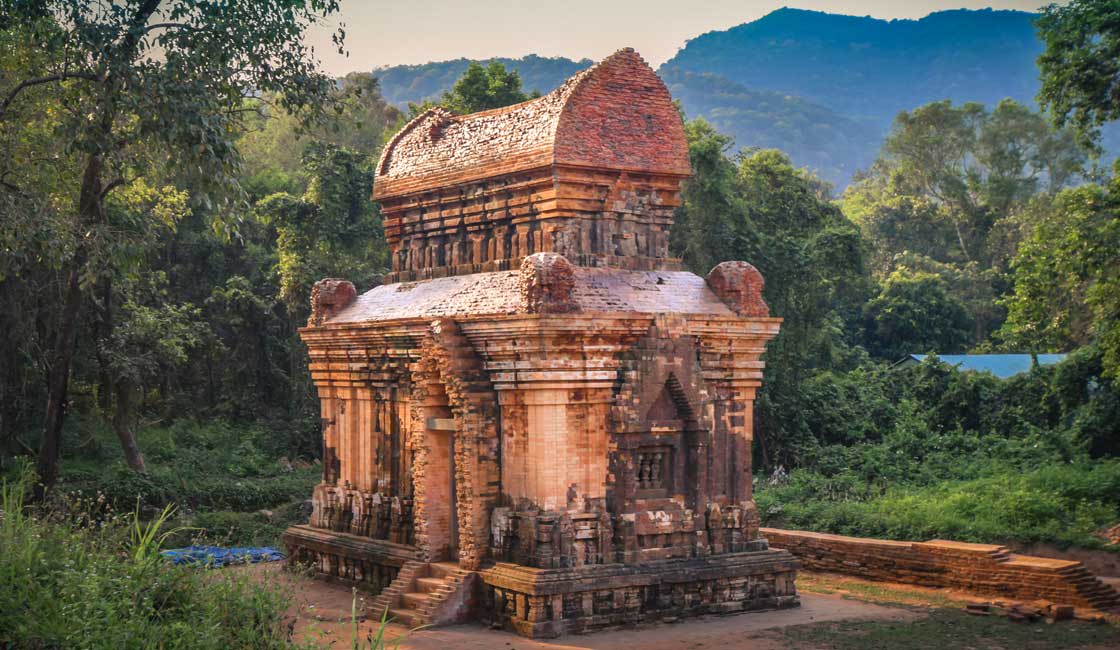
After reconstruction
The word temple implies a large structure, but the Cham kings were building rather small, red-brick structures to house the lingam and yoni representations of Shiva or, at some period, statues of Buddha. Not all buildings at the complex were serving as shrines, some were treasuries, others as baths and changing rooms to prepare for the service.
The temples represent the sacred Mount Meru, the center of the Hindu universe. Just as important as the structures themselves are the sandstone and brick reliefs, depicting deities, guardians, and events. Many have been lost over the centuries, but the remaining ones are truly impressive. A big collection of Cham sculptures is on exhibition at the museum in Da Nang.
The sanctuary seems to have been misfortunate in its history. The restorations that started in the 1930s brought back a lot of its splendor but the Vietnam War didn’t spare the site as it was used by the Viet Cong and subsequently targeted by US bombs and landmines which took a serious toll.
Thankfully some 70 temples remain fully or partly intact and even some intricate decorations have been preserved. The site is constantly under renovation, bringing more and more temples to their best shape. In recent years the pathways and infrastructure have been hugely improved.
On your visit, you will be able to walk through the whole area of the sanctuary and see the temples and ancient function buildings in several groups. You can enter many of them, and see the art of them up close. You will also notice the war damage, including many bomb craters that have been purposely kept at the site as an important part of history.
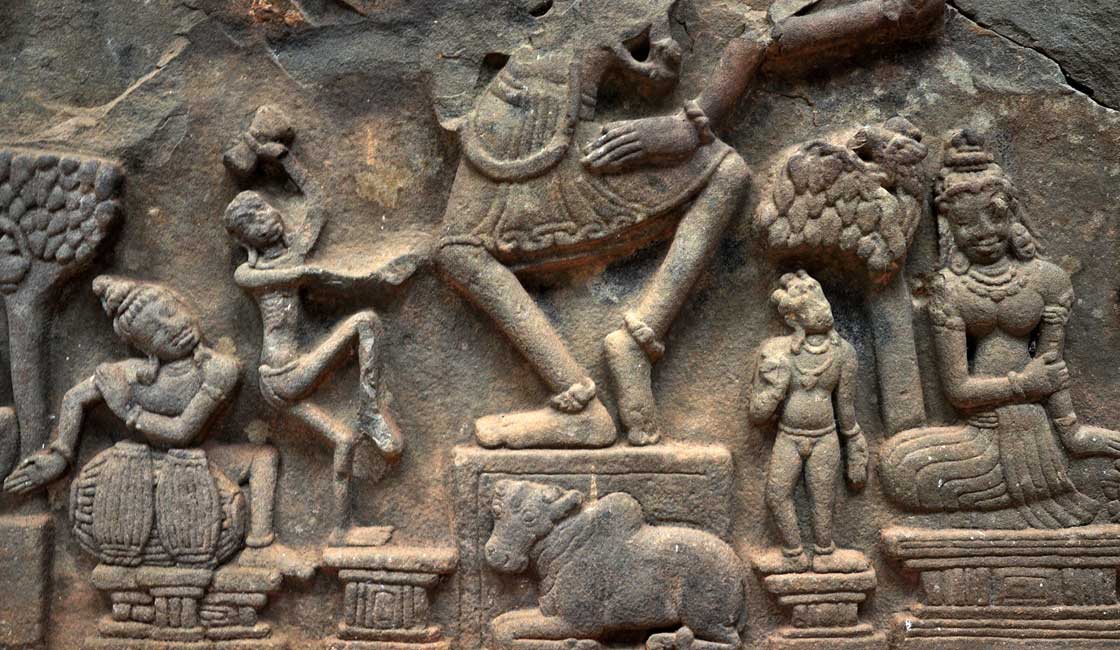
Shiva and Nandin in the center
Hopefully, by now you have a little more understanding of the significance and splendor of these remarkable ruins. My Son in Vietnam might not yet be as famous as the temple complex of Angkor Wat in neighboring Cambodia, and that may well be the reason it is often mistakenly overlooked by most tourists. But, if you are lucky enough to be in central Vietnam around Hoi An, a visit to My Son Vietnam is highly recommended to any traveler interested in historic cultures.
While Rainforest Cruises aim to provide accurate and up-to-date information, we make no representations as to the accuracy or completeness of any information herein or found by following any link on this site. Rainforest Cruises cannot and will not accept responsibility for any omissions or inaccuracies, or for any consequences arising therefrom, including any losses, injuries, or damages resulting from the display or use of this information.




